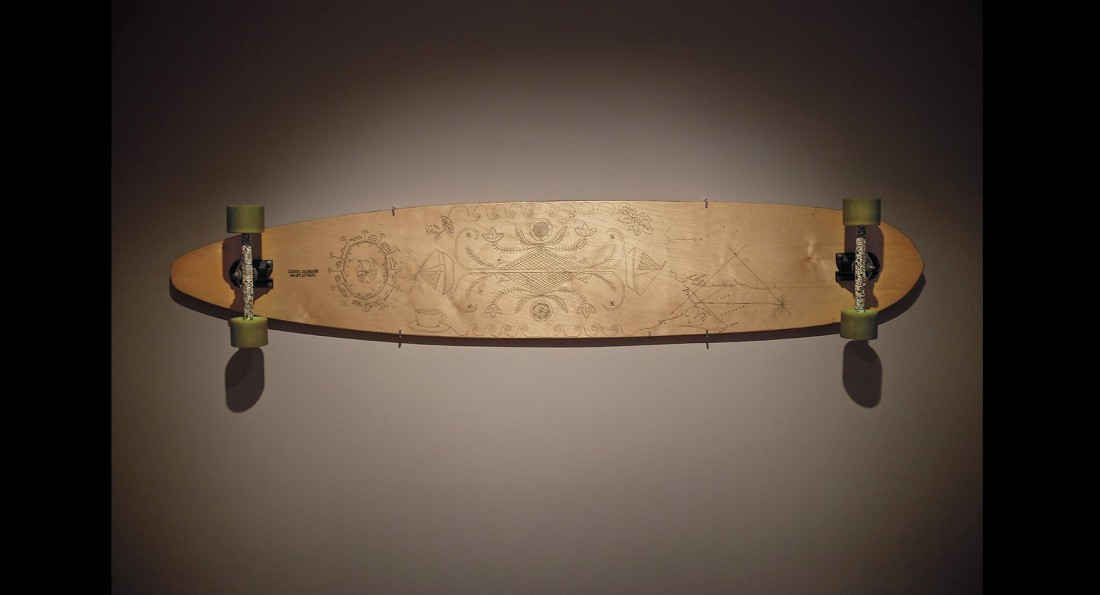Exploring Indigenous board cultures
Art about surfing, skateboarding and snowboarding at the WAG
Jaime Isaac says she thought a lot about curating an art exhibition about surfing, skateboarding and snowboarding. Her vision – Boarder X – is now on display at the Winnipeg Art Gallery (WAG).
“Growing up as a kid, skateboarding and snowboarding were really important to me, and they really influenced and informed my worldview, and it still does,” Isaac, the WAG’s curator of contemporary and Indigenous art, says.
It impacts where she travels and for what, as well as how she relates to the land.
“As a kid, that culture, being a part of that provided a sense of belonging,” Isaac says.
For her, having this exhibit in the WAG is about more than just exploring board culture and art. It’s also about showing people the gallery is a public space that belongs to everyone.
“When people look at the WAG, they see this huge, modern building that I think can be really intimidating for some, and I don’t think it has to be. The more people that come through the doors and experience art, I think it’s another way of experiencing culture and where we are,” Isaac says.
Within board sports, there’s also a lot to explore, both culturally and artistically.
“It can be a cultural experience in itself … skateboarding is very performative, and it’s just a different lens for looking at urban terrain or, in this case, a different way of looking at an art space and what it can be,” Isaac says.
Isaac notes that surfing originated in pre-contact Polynesian Indigenous cultures in Hawaii. Skateboarding and then surfing followed from the ocean board sport. To her, it made sense that this exhibit specifically feature Indigenous artists, and she found plenty.
Jordan Bennett, Roger Crait, Steven Davies, Mark Igloliorte, Mason Mashon, Meghann O’Brien and Les Ramsay, Indigenous artists from across Canada, have their work in Boarder X.
Isaac says, for his contribution to the exhibition, Igloliorte referenced his Inuit heritage by thinking about the innovation of the kayak. In his video, he does a kickflip using the same axis rotation used in flipping a kayak.
“He’s actually mobilizing this traditional knowledge into a contemporary way and a contemporary way that he understands and connects with. I feel that that’s a perfect example of bringing Indigeneity forward in terms of reflecting on both art and board practices,” she says.
A painting by Crait, an artist who grew up in Winnipeg, is an exploration of dystopian/utopian urban landscapes and his belonging in that, Isaac says.
“For him, I really love that work. It’s so playful,” Isaac says. “I think you’ll find that the whole exhibition has got a playfulness to it. Not taking away from the formal or rigour of the work, but it is playful, and it’s meant to be perceived that way.”
The work on display is interdisciplinary, including carving, weaving, painting, video, performance and photography.
The exhibit, along with Vernon Ah Kee: cantchant, opened in November and will be on display until April 23.
Published in Volume 71, Number 14 of The Uniter (January 5, 2017)







